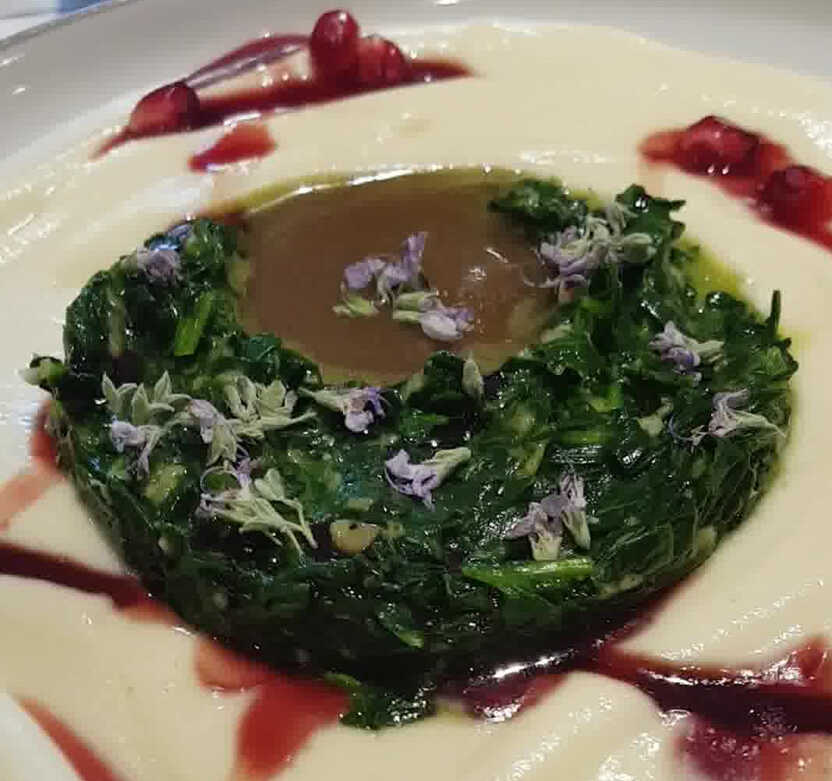
Sous Vide Lamb Shanks - Spring 2025

I was planning to get some fillet steak from the butcher at the end of my weekly meat walk, but he was shut. The bastard. So I was forced to shop in my Local Fucking Supermarket™.
On the way in I'd passed a herd of spring lambs gambolling around a field and had already decided to change my mind and see what lamb the butcher had, so when I saw a pair of plastic-packed shanks in the supermarket I snapped them up immediately. I hadn't tried sous-vide-ing lamb before, so this required some googling before coming up with the two main options on offer:
- A long slow cook for 2 days at 55-60°C.
- A shorter braise at 65-80°C
I'm not convinced I made the best choice.
I've also discovered that adding oil to your sous-vide pouch causes problems with the heat sealing since the vacuum sucks quite a lot of the oil up to the neck of the bag preventing a decent seal. You get the same problem when you add any liquid, but adding oil definitely makes the problem worse.
One solution is to freeze the liquid elements before adding them, or freeze the whole bag, so that the vacuum can't suck them out.
Or you could use butter instead of course.
To serve I put a small oiled cookie cutter inside a larger one on the plate and filled the gap in-between with spinach. I covered the rest of the plate up to the outer ring with a layer of celeriac puré and filled the smaller ring on the inside with the reduced lemon and mint sauce. After carefully lifting off the rings I drizzled a few lines of pomegranate reduction across the plate using a syringe, added some reserved pomegranate seeds and rosemary flowers I found on my meat walk, and set a seared lamb shank on the edge of the plate.
menu one
Main
Braised Lamb Shanks with Lemon and Mint
Celeriac and Yoghurt Purée
Pomegranate Reduction
Braised Lamb Shanks with Lemon and Mint
The meat.
SidesCeleriac and Yoghurt Purée
One veg.
Wilted Spinach with Tarragon
Two veg.
DressingPomegranate Reduction
The cherry on top.
Now TWO meals for the price of one!
My brother scored a whole loin of lamb from work, so I butchered it up and saved the breast for myself.
Breast/best geddit? Oh please yourselves!
Anyhoo, as part of my ongoing battle to bring perfect rolled lamb's breasts to the table I decided to have a go at sous-vide-ing them too.
My brother scored a whole loin of lamb from work, so I butchered it up and saved the breast for myself.
Breast/best geddit? Oh please yourselves!
Anyhoo, as part of my ongoing battle to bring perfect rolled lamb's breasts to the table I decided to have a go at sous-vide-ing them too.
menu two
Main
Stuffed Rolled Lamb's Breasts
Cauliflower Mash
Stuffed Rolled Lamb's Breasts
The meat.
SidesCauliflower Mash
One veg.
Edamame Bean Purée
Two veg.
Romesco Sauce
Three veg. Ha Ha Ha!
Sous Vide Lamb Shanks with Lemon and Mint
main meat
The inspiring recipe used Sicilian lemons, but any lemon will do. In a pinch.
I think a few anchovies or rosemary sprigs wouldn't go amiss either, but I didn't find out. This time.
The shanks were beautifully tender but lacked depth of flavour if I'm honest. I might try a shorter, hotter braise next time.
I think a few anchovies or rosemary sprigs wouldn't go amiss either, but I didn't find out. This time.
The shanks were beautifully tender but lacked depth of flavour if I'm honest. I might try a shorter, hotter braise next time.
Serves 2
Ingredients
- 2 lamb shanks
- zest and juice of a lemon
- bunch of mint leaves, finely chopped
- 1-2 garlic cloves minced or crushed
- salt & pepper
- drizzle of olive oil
Dressing:
Pierce the shanks all over with a small sharp knife.
Mix the marinade ingredients, season well and smear all over the shanks making sure to get it into the cuts.
Put both shanks into one pouch and add all the marinade and the oil.
Vacuum seal the pouch. or your preferred temperature, weight it down and check periodically because it does tend to inflate slightly over the long cooking.
Slit the pouch open and strain the juices into a pot. Pat dry the shanks with paper towels and keep them warm.
Add a couple of tablespoons of vermouth or a quarter of a cup of white wine to the pot and boil it until it reduces and thickens slightly. You can freshen the sauce with a squeeze of lemon and sprigs of mint if you like - strain them out before continuing.
Put a few pinches of xanthan in a small cup, drizzle in a tablespoon of olive oil and blend well with a pastry brush. Whisk into the sauce with the brush a little at a time until the sauce thickens as desired over a low heat.
Season if necessary.
You'll want to sear the shanks - which you can do in scorching hot oil in a shallow frying pan, or under a grill as hot as you can get it. Don't overcook their insides though or they'll dry out.
Vacuum seal the pouch. or your preferred temperature, weight it down and check periodically because it does tend to inflate slightly over the long cooking.
Slit the pouch open and strain the juices into a pot. Pat dry the shanks with paper towels and keep them warm.
Add a couple of tablespoons of vermouth or a quarter of a cup of white wine to the pot and boil it until it reduces and thickens slightly. You can freshen the sauce with a squeeze of lemon and sprigs of mint if you like - strain them out before continuing.
Put a few pinches of xanthan in a small cup, drizzle in a tablespoon of olive oil and blend well with a pastry brush. Whisk into the sauce with the brush a little at a time until the sauce thickens as desired over a low heat.
Season if necessary.
You'll want to sear the shanks - which you can do in scorching hot oil in a shallow frying pan, or under a grill as hot as you can get it. Don't overcook their insides though or they'll dry out.
My shanks were too fragile to fry so I grilled them, which worked well enough.
Serve drizzled with the sauce.
Rather good. Not amazing, but good.
Wilted Spinach with Tarragon
veg sides
An easy-peasy spinach purée.
Ingredients
- spinach, roughly chopped
- tarragon, leaves only
- butter
- garlic, crushed
- salt & pepper
- parmesan, grated
Roughly chop the spinach, removing any particularly thick or woody stalks.
Add tarragon leaves until the aroma is pretty balanced.
Crush the garlic to a paste with sea salt and ground pepper using the flat of a knife.
Melt a generous lump of butter in a large pan and sweat the garlic for a few minutes, then throw in spinach and tarragon and let it wilt down, stirring occasionally.
When the spinach has collapsed completely and any excess liquid has cooked off, stir through a sprinkling of grated parmesan if you like.
Add tarragon leaves until the aroma is pretty balanced.
Crush the garlic to a paste with sea salt and ground pepper using the flat of a knife.
Melt a generous lump of butter in a large pan and sweat the garlic for a few minutes, then throw in spinach and tarragon and let it wilt down, stirring occasionally.
When the spinach has collapsed completely and any excess liquid has cooked off, stir through a sprinkling of grated parmesan if you like.
Dress with rosemary flowers that you find along the way. Side.
Pomegranate Reduction
veg vegan sauce
Keep back a few whole seeds for decoration if you like.
Makes enough to dress a couple of lamb shanks
Ingredients
- 2 pomegranates
Halve the pomegranates horizontally, then pull out the seeds, either by breaking the pieces apart and plucking them out with your fingers, or tapping them on the skin side firmly with a wooden spoon until they empty.
You want as little pith as possible, which is bitter, which you can more easily remove if you need to by emptying the seeds into a bowl of water and scooping out the pith which will float to the top.
Juice the seeds either using a juicer, or blending in a, er, blender, or food processor then straining through muslin or a fine sieve.
Boil the juice in a pot to reduce to sauce thickness. Skim occasionally.
If you want molasses then keep going until you reach a rich syrup stage, but if you want to use this as a dressing you should stop earlier.
The juice will thicken as it cools, so re-warm before using if you want it to drizzle.
You want as little pith as possible, which is bitter, which you can more easily remove if you need to by emptying the seeds into a bowl of water and scooping out the pith which will float to the top.
Juice the seeds either using a juicer, or blending in a, er, blender, or food processor then straining through muslin or a fine sieve.
Boil the juice in a pot to reduce to sauce thickness. Skim occasionally.
If you want molasses then keep going until you reach a rich syrup stage, but if you want to use this as a dressing you should stop earlier.
The juice will thicken as it cools, so re-warm before using if you want it to drizzle.
I used a syringe to deliver the pomegranate sauce, though you could probably drizzle it with a teaspoon if you're dexterous.
Celeriac and Yoghurt Purée
veg side
I thought I might try adding a hint of sourness to the celeriac, and I already had lemong going on, so I blended in some yoghurt.
It's not bad, though I think perhaps a bit of tangy cheese wouldn't have done any harm - perhaps feta?
It's not bad, though I think perhaps a bit of tangy cheese wouldn't have done any harm - perhaps feta?
Yes indeed, blending in some marinated feta à la Wild Garlic Velouté is excellent.
I added the potato to give the purée some smoothness since celeriac can be a little grainy on its own.
Serves 2
Ingredients
- 1 small celeriac, peeled, chunked
- 1 small potato, peeled, chunked
- a few tablespoons of milk
- knob of butter
- 2 tablespoons Greek yoghurt or feta!
- salt & white pepper
Peel the celeriac and cut into decent chunks.
Peel about a quarter the quantity of potato and cut it up too.
Bring salted water to the boil and drop in the celeriac. Simmer for 5 minutes or so then add the potato.
Cook both for another 15 minutes or until they're all softened.
Drain the pieces and throw them into a blender or food processor with enough hot milk to lubricate. Add a good chunk of butter and blend until smooth.
Stir through some yoghurt and season to taste.
Peel about a quarter the quantity of potato and cut it up too.
Bring salted water to the boil and drop in the celeriac. Simmer for 5 minutes or so then add the potato.
Cook both for another 15 minutes or until they're all softened.
Drain the pieces and throw them into a blender or food processor with enough hot milk to lubricate. Add a good chunk of butter and blend until smooth.
Stir through some yoghurt and season to taste.
It ain't bad, but I'm not sure that just adding cream isn't better.
Soy Bean, Mint and Yoghurt Purée
veg side
I had yoghurt left over from the celeriac so I though I'd add it to some soy beans. Or edamame beans. Same thing.
Ingredients
- frozen soy beans
- mint leaves
- yoghurt
- olive oil
- squeeze of lemon juice
- raw or roast garlic optional
- salt
Pop the beans into a pot of lightly salted boiling water and cook for a few minutes until tender.
Drain them, keeping a little of the cooking water, and put them in a blender along with a drizzle of olive oil, a few spoonfuls of yoghurt and a squeeze of lemon juice.
Add a clove of garlic if you like.
Blend until smooth, adding a little extra cooking water if required.
Adjust the seasoning.
Drain them, keeping a little of the cooking water, and put them in a blender along with a drizzle of olive oil, a few spoonfuls of yoghurt and a squeeze of lemon juice.
Add a clove of garlic if you like.
Blend until smooth, adding a little extra cooking water if required.
Adjust the seasoning.
Yeah, s'fine.
Sous Vide Rolled Lamb Breast
Round Four
Round Four
main meat
So I decided to follow the suggestions for sous-vide-ing rolled lamb breasts by Shady Morels
Nice Name!.
It was a disaster. Mainly because of the salt (and sugar) cure he uses. I really should have learned from other occasions I've tried dry cures that it's almost always impossible to get all the salt off afterwards.
And the result is vastly over-salted product. You can have the same problem with courgettes or aubergines if you salt them, though it's a lot easier to wash them off afterwards and you only salt them for a few minutes.
Here he salts for 24 hours!
Disaster!
So, skip the salting thing. I'm really not sure what it's supposed to achieve here anyway to be honest.
As for the time and temperature for the water bathing, there is a very large window of suggestions for lamb in general varying from 48 hours as low as 55°C to 12 hours at 80°C. I'd previously done some lamb shanks for 48 hours at 60.9°C, which were OK - tender and falling apart but not amazingly flavoured. And Mr Real Life has tried breasts at 60°C underdone and 70°C too dense, so I thought split the difference and give them a go at 65°C.
And the meat really was beautifully cooked. Shame about the salt.
Here he salts for 24 hours!
Disaster!
So, skip the salting thing. I'm really not sure what it's supposed to achieve here anyway to be honest.
As for the time and temperature for the water bathing, there is a very large window of suggestions for lamb in general varying from 48 hours as low as 55°C to 12 hours at 80°C. I'd previously done some lamb shanks for 48 hours at 60.9°C, which were OK - tender and falling apart but not amazingly flavoured. And Mr Real Life has tried breasts at 60°C underdone and 70°C too dense, so I thought split the difference and give them a go at 65°C.
And the meat really was beautifully cooked. Shame about the salt.
Serves 8
Ingredients
- 1 side of lamb belly, about 2-3 pounds
For the Cure DO NOT CURE!:- 4 tbsp kosher salt
- 2 tbsp sugar
- Zest of two lemons
- A couple sprigs of fresh rosemary, chopped
- 1 tbsp olive oil
For the Roll:- anchovies
- mint
- olive oil
- garlic
Mix the salt, sugar, rosemary, and lemon zest in a bowl. Sprinkle a layer in a baking dish, then set the lamb on top, then cover with the rest of the mixture.
Firmly press the curing mixture into the lamb. Cover with plastic wrap and refrigerate for 24 hours.
Thoroughly rinse the curing mixture off the lamb, then set on a cutting board and cut it in half into two broad strips. I didn't bother splitting it into two. Do not season the lamb with any more salt, it will be perfectly seasoned at this point already.
Place each roll of lamb into a ziplock bag. Add a glug of olive oil to each, just to take the space of any small air pockets. Chill in the freezer for 15 minutes to stop the oil from being sucked into the neck of the bag and interfering with the heat sealer. Remove the air with the water pressure method, or vacuum seal if you have one.
Cook the lamb in a 70 65°C water bath for 12 hours.
Remove from the bag and pat the roll dry on kitchen roll (if frying). You can of course use the pouch liquid to make a sauce but check for salt levels first 😉
Divide into fat slices each still tied around to prevent them from collapsing, before cutting the string to serve.
Thoroughly rinse the curing mixture off the lamb, then set on a cutting board and cut it in half into two broad strips. I didn't bother splitting it into two. Do not season the lamb with any more salt, it will be perfectly seasoned at this point already.
Perfectly seasoned my arse. It will be salted to death.
Season the breasts as normal and SKIP THE REST OF THIS PART!
Roll up each strip of lamb belly like a jelly roll, press down to ensure it is packed tightly together, then tie with kitchen twine. You want the rolls to be as tight as possible with no air gaps.
Season the breasts as normal and SKIP THE REST OF THIS PART!
Since you won't now be curing the belly with a flavourful rub, you can grind or mash up the anchovies and garlic filling ingredients with a little salt, pepper and olive oil
and mix in minced mint leaves to make a paste which you smear over the inside of the lamb breast before rolling.
Be sure to tie the breast using separate loops of string so it can be sliced afterwards with the string still on.
Be sure to tie the breast using separate loops of string so it can be sliced afterwards with the string still on.
Place each roll of lamb into a ziplock bag. Add a glug of olive oil to each, just to take the space of any small air pockets. Chill in the freezer for 15 minutes to stop the oil from being sucked into the neck of the bag and interfering with the heat sealer. Remove the air with the water pressure method, or vacuum seal if you have one.
Cook the lamb in a 70 65°C water bath for 12 hours.
Remove from the bag and pat the roll dry on kitchen roll (if frying). You can of course use the pouch liquid to make a sauce but check for salt levels first 😉
Divide into fat slices each still tied around to prevent them from collapsing, before cutting the string to serve.
Well, the meat is perfect. And the skin is extremely silky, though I would prefer it crispy.
You can (should?) fry the slices which gives a nice crust to the flat sides, but it's pretty difficult to crisp up the whole skin this way.
Maybe you could briefly deep-fry them?
Anyway, this is the closest I've come to perfect lamb's breasts so far!
You can (should?) fry the slices which gives a nice crust to the flat sides, but it's pretty difficult to crisp up the whole skin this way.
Maybe you could briefly deep-fry them?
Anyway, this is the closest I've come to perfect lamb's breasts so far!
Cauliflower Mash
veg side
Honestly it's more a purée than a mash. But it is amazingly smooth.
Funny thing though. The pre-roasting of the cauliflower florets turns them a faded yellow colour,
but the photo in the original recipe is notably bone-white.
Not to mention the addition of a chilli and a single wild garlic leaf is that a joke?.
I'm not even sure how much the roasting really achieves.
Suffice to say I skipped the single wild garlic leaf and the red chilli. I might be inclined to add some regular, white, garlic if I wanted to add a little more flavour without affecting the colour. Perhaps some white leeks.
Suffice to say I skipped the single wild garlic leaf and the red chilli. I might be inclined to add some regular, white, garlic if I wanted to add a little more flavour without affecting the colour. Perhaps some white leeks.
Serves 4
Ingredients
- 750g of cauliflower, cut into small florets
- 1 tbsp of olive oil
- 1 wild garlic leaf, add more if needed at end of cooking What's wrong with actual garlic, which is, after all white?
- 1 red chilli, deseeded and finely chopped
- salt, to taste
- black pepper, to taste obviously, white pepper would be a better choice
- 200ml of double cream
Preheat the water bath to 84°C.
Cut the cauliflower into small florets, drizzle with 1 tbsp olive oil and roast in the oven for 20-30 minutes.
Once ready and totally cooled, place the roasted cauliflower in the sous vide pouch, in one layer. Add the salt, pepper to taste, wild garlic and the chopped chilli or not!. Seal the pouch.
Place the cauliflower pouches in the water bath and set the timer to 1.5 hours. When ready, remove from the bag and blitz with cream in a food processor. Alternatively, if they are very soft you can massage the pouch, add the cream and mix all very well inside the pouch.
Cut the cauliflower into small florets, drizzle with 1 tbsp olive oil and roast in the oven for 20-30 minutes.
Once ready and totally cooled, place the roasted cauliflower in the sous vide pouch, in one layer. Add the salt, pepper to taste, wild garlic and the chopped chilli or not!. Seal the pouch.
Place the cauliflower pouches in the water bath and set the timer to 1.5 hours. When ready, remove from the bag and blitz with cream in a food processor. Alternatively, if they are very soft you can massage the pouch, add the cream and mix all very well inside the pouch.
A beautifully silky smooth purée. Though I do wonder if it's unnecessarily complicated?
Would it be any poorer for just sous-vide-ing the florets?
Sort-Of Lamb Tagine
main meat
Probably a bit of a stretch to call this stew a tagine, but it sounds more exotic.
I made it because I'd ended up with perfectly cooked but heavily over-salted slices of lamb breast and needed to dilute the salt. Which is why I included the potatoes.
I probably wouldn't otherwise.
I used half a leg of lamb cut from the bone, but ideally you should use neck or shoulder.
I made it because I'd ended up with perfectly cooked but heavily over-salted slices of lamb breast and needed to dilute the salt. Which is why I included the potatoes.
I probably wouldn't otherwise.
I used half a leg of lamb cut from the bone, but ideally you should use neck or shoulder.
Serves 8
Ingredients
- olive oil
- about 1kg lamb, cubed
- couple sticks of cinnamon or cassia
- 2 onions, chopped
- oregano or thyme
- half a head of garlic, peeled, halved if large
- couple tablespoons tomato purée
- tablespoon smoked paprika
- potatoes, scrubbed cut into large chunks
- a couple of carrots, cut into large chunks
- stock, preferably lamb, to cover
- 1 jar roast peppers
- a few sun-dried tomatoes, roughly chopped
- a handful of dried apricots, halved or quartered
Options:- cauliflower, florets separated
- green beans, topped, tailed
To Serve:- coriander or other herbs, chopped
- lemon juice
Scrub the carrots, cut into decent sections then halve or quarter the sections lengthways depending on thickness.
Scrub the potatoes and cut into large chunks - leave small potatoes whole, halve or quarter slightly larger ones.
Peel the garlic cloves. halve if large.
Roughly chop the onions.
Heat the oil in a large pan with the cinnamon sticks and seal the lamb, in batches as necessary and set aside.
Fry the onions until they begin to colour, add the garlic and the oregano or thyme, and continue for a few minutes. Add tomato purée and fry to cook off any harshness. Stir through a couple of tablespoons of paprika.
Add the potatoes and the carrots. Return the fried lamb and any over-salted lamb-breast slices. Add enough stock to cover, and bring to a simmer. Cook until the meat is tender and the vegetables have begun to soften.
Throw in cauliflower florets, if you want to. Add a few roughly chopped sun-dried tomatoes, a jar of roast peppers with some of the liquid, a handful of dried apricots, halved.
Simmer until everything is cooked through, throwing in a handful of green beans towards the end too, if you like.
Season, and serve dressed with chopped herbs and a squeeze of lemon juice.
Scrub the potatoes and cut into large chunks - leave small potatoes whole, halve or quarter slightly larger ones.
Peel the garlic cloves. halve if large.
Roughly chop the onions.
Heat the oil in a large pan with the cinnamon sticks and seal the lamb, in batches as necessary and set aside.
Fry the onions until they begin to colour, add the garlic and the oregano or thyme, and continue for a few minutes. Add tomato purée and fry to cook off any harshness. Stir through a couple of tablespoons of paprika.
Add the potatoes and the carrots. Return the fried lamb and any over-salted lamb-breast slices. Add enough stock to cover, and bring to a simmer. Cook until the meat is tender and the vegetables have begun to soften.
Throw in cauliflower florets, if you want to. Add a few roughly chopped sun-dried tomatoes, a jar of roast peppers with some of the liquid, a handful of dried apricots, halved.
Simmer until everything is cooked through, throwing in a handful of green beans towards the end too, if you like.
Season, and serve dressed with chopped herbs and a squeeze of lemon juice.
It ain't too bad a stew. Taginey, sort-of.
And a great way to hide some over-salted lamb breasts.
And a great way to hide some over-salted lamb breasts.
Romesco Sauce
veg vegan sauce italian
The more tomatoes you use, the thinner the sauce. Though you can enrich it with a few sun-dried tomato pieces or some tomato paste.
Almonds and hazelnuts are traditional ingredients, but you could use pine nuts or walnuts.
Almonds and hazelnuts are traditional ingredients, but you could use pine nuts or walnuts.
Serves 4
Ingredients
- 2 or 3 roma tomatoes (5 1/5 ounces or 150 g each), cored
- 1 bell pepper optional
- 1 medium head garlic, unpeeled, split in half
- 1 ounce (30 g) dried ñora peppers (about 4 peppers) or ancho chile peppers (about 3 peppers); (see note)
- 1 slice toasted or stale bread (1 1/2 ounces; 40 g), any thick and heavy crusts removed, bread broken into small pieces
- 1 tablespoon (15 ml) red wine or sherry vinegar, plus more if desired
- ½ cup skinned and toasted almonds and/or hazelnuts (2 ¾ ounces; 80 g)
- 2 tablespoons (30 ml) extra-virgin olive oil, plus more if desired
- Kosher salt
Preheat oven to 350°F (180°C). Line a rimmed baking sheet with aluminum foil and place tomatoes and half of garlic head on it.
Roast in oven until tomatoes are wrinkled and lightly charred in spots and garlic is soft, about 1 hour. Let cool.
Meanwhile, place dried peppers in a medium heatproof bowl and cover with boiling water. Place a weight or wet paper towel on top to help submerge peppers. Let stand until peppers are fully softened, 30 minutes to 1 hour.
If peppers are very stubborn (as thick-skinned ñoras can be), you may need to tear a small hole in them to let water penetrate inside.
Drain peppers and discard stems and seeds. Using a paring knife, carefully scrape the flesh from the skins. Discard skins. Peel skins from tomatoes and roasted garlic.
To Make Sauce Using a Mortar and Pestle:
Add 3 cloves roasted garlic and 1 or 2 cloves peeled raw garlic to mortar. (Feel free to make this recipe more or less garlicky, according to your own tastes, by adding or subtracting roasted or raw garlic.)
Smash garlic to a paste with pestle.
Add bread and moisten with vinegar. Smash to a paste. Add nuts and smash as finely as you can. The mixture should have the consistency of a rough paste when you're done.
Smash in scraped pepper flesh, followed by peeled roasted tomatoes. Mix in olive oil until thoroughly combined. Season with salt. Add more oil, 1 tablespoon (15ml) at a time, if a thinner, richer sauce is desired.
Add more vinegar to taste as well.
To Make Sauce Using a Countertop Blender or Immersion Blender:
Add 3 cloves roasted garlic and 2 cloves peeled raw garlic to jar of blender, or blending container if using an immersion blender.
(You can use more or less roasted and raw garlic, as desired, according to your own tastes.) Add nuts. Blend until finely processed, scraping down sides as necessary.
Blend in peeled roasted tomatoes and scraped pepper flesh. Add bread, olive oil, and vinegar, and blend until smooth. (How smooth to make it is up to you; some texture is okay.)
Season with salt and add more oil and vinegar to taste, if desired.
To Make Sauce Using a Food Processor:
In the bowl of a food processor, combine 3 cloves roasted garlic and 2 cloves peeled raw garlic (use more or less roasted and raw garlic, as desired, according to your own tastes), along with bread and nuts. Process, scraping down sides as necessary, until finely chopped.
Add peeled roasted tomatoes and scraped pepper flesh and process until a thick, rough paste forms.
Process in olive oil and vinegar, then season with salt.
Add more vinegar and olive oil, as desired, to adjust taste and texture.
Roast in oven until tomatoes are wrinkled and lightly charred in spots and garlic is soft, about 1 hour. Let cool.
Meanwhile, place dried peppers in a medium heatproof bowl and cover with boiling water. Place a weight or wet paper towel on top to help submerge peppers. Let stand until peppers are fully softened, 30 minutes to 1 hour.
If peppers are very stubborn (as thick-skinned ñoras can be), you may need to tear a small hole in them to let water penetrate inside.
Drain peppers and discard stems and seeds. Using a paring knife, carefully scrape the flesh from the skins. Discard skins. Peel skins from tomatoes and roasted garlic.
To Make Sauce Using a Mortar and Pestle:
Add 3 cloves roasted garlic and 1 or 2 cloves peeled raw garlic to mortar. (Feel free to make this recipe more or less garlicky, according to your own tastes, by adding or subtracting roasted or raw garlic.)
Smash garlic to a paste with pestle.
Add bread and moisten with vinegar. Smash to a paste. Add nuts and smash as finely as you can. The mixture should have the consistency of a rough paste when you're done.
Smash in scraped pepper flesh, followed by peeled roasted tomatoes. Mix in olive oil until thoroughly combined. Season with salt. Add more oil, 1 tablespoon (15ml) at a time, if a thinner, richer sauce is desired.
Add more vinegar to taste as well.
To Make Sauce Using a Countertop Blender or Immersion Blender:
Add 3 cloves roasted garlic and 2 cloves peeled raw garlic to jar of blender, or blending container if using an immersion blender.
(You can use more or less roasted and raw garlic, as desired, according to your own tastes.) Add nuts. Blend until finely processed, scraping down sides as necessary.
Blend in peeled roasted tomatoes and scraped pepper flesh. Add bread, olive oil, and vinegar, and blend until smooth. (How smooth to make it is up to you; some texture is okay.)
Season with salt and add more oil and vinegar to taste, if desired.
To Make Sauce Using a Food Processor:
In the bowl of a food processor, combine 3 cloves roasted garlic and 2 cloves peeled raw garlic (use more or less roasted and raw garlic, as desired, according to your own tastes), along with bread and nuts. Process, scraping down sides as necessary, until finely chopped.
Add peeled roasted tomatoes and scraped pepper flesh and process until a thick, rough paste forms.
Process in olive oil and vinegar, then season with salt.
Add more vinegar and olive oil, as desired, to adjust taste and texture.
Makes a pleasant, if somewhat bland pasta sauce, but a good dressing for meat or vegetables, or a thickener for soup, or smeared over a slice of toast!
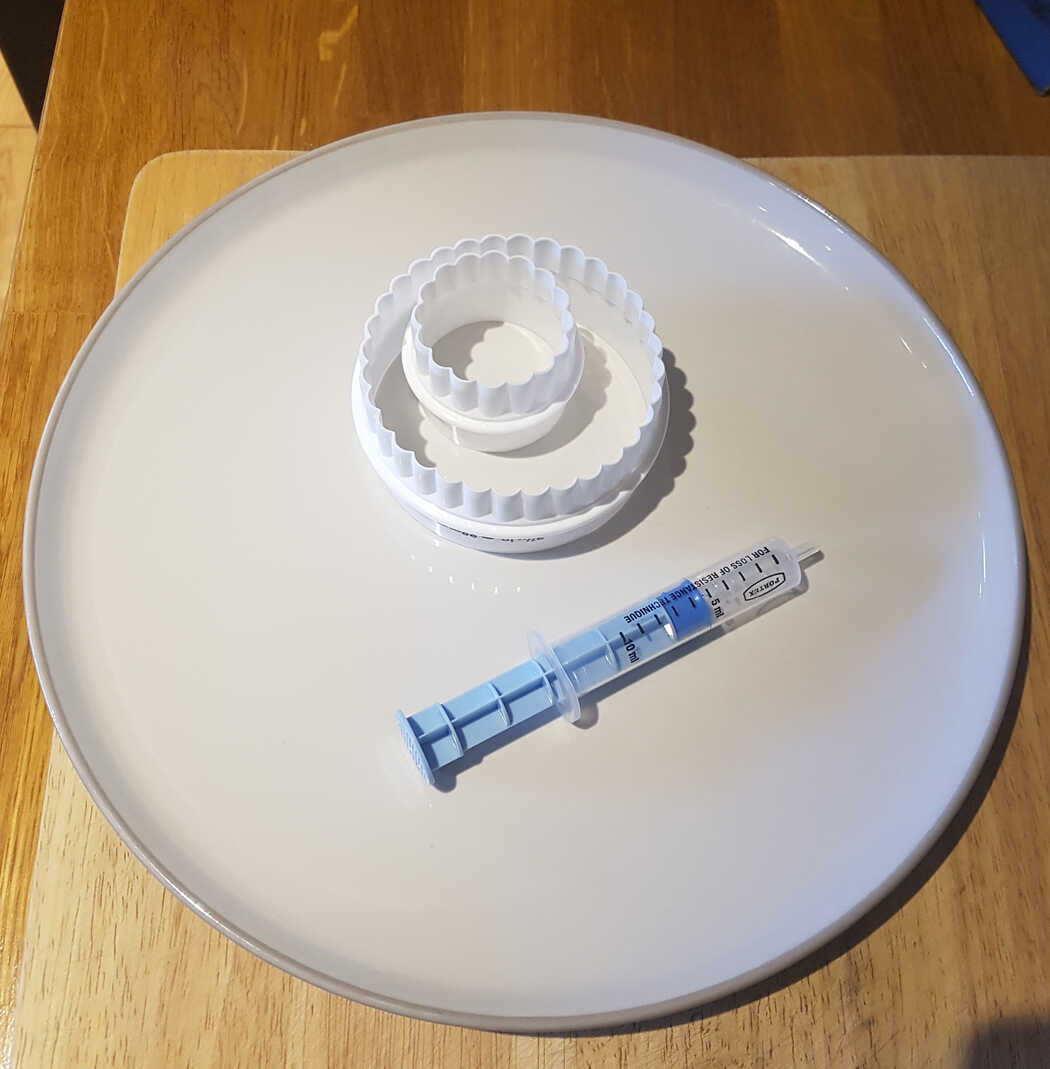
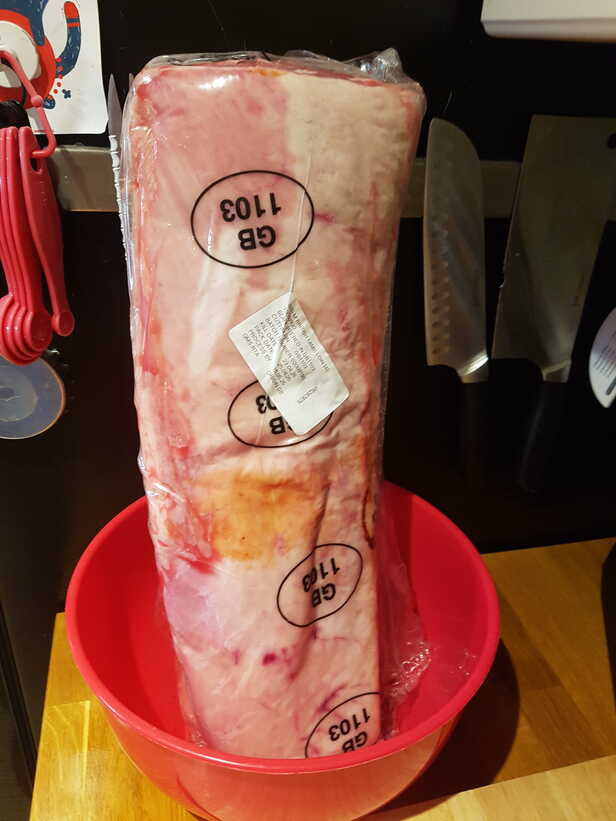
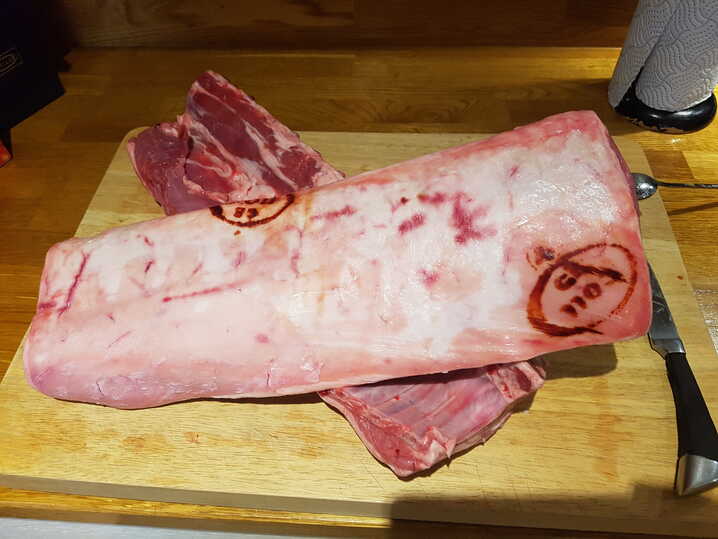
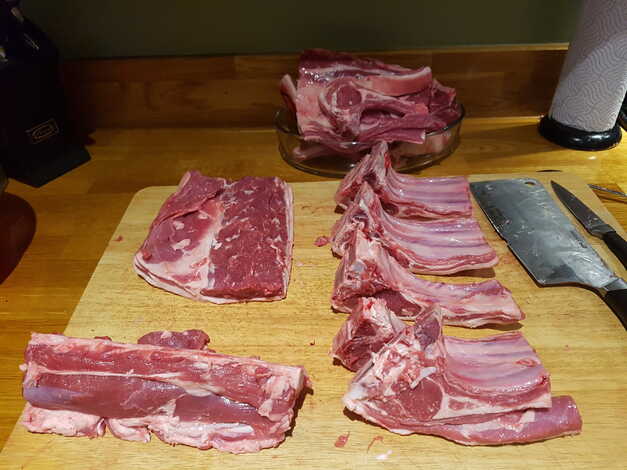
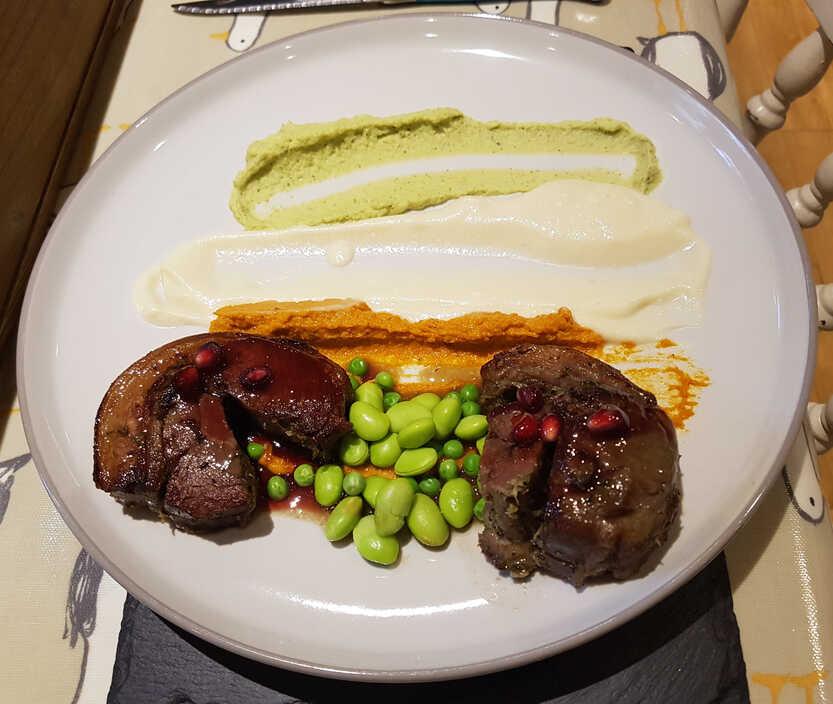
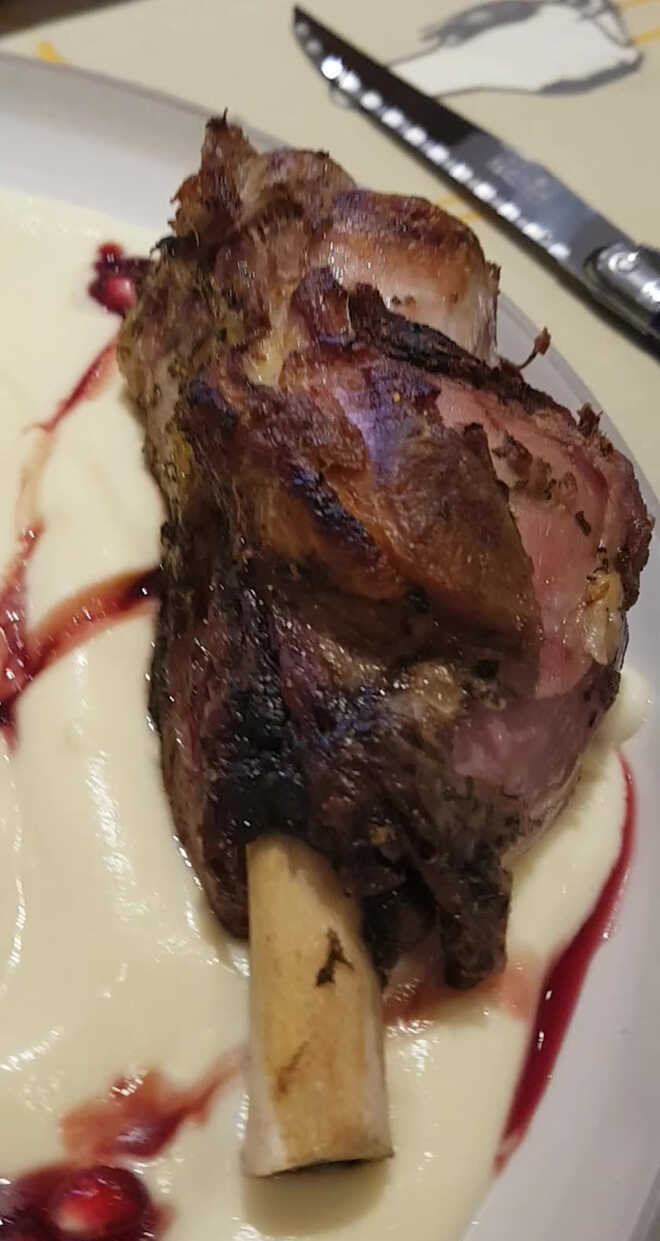
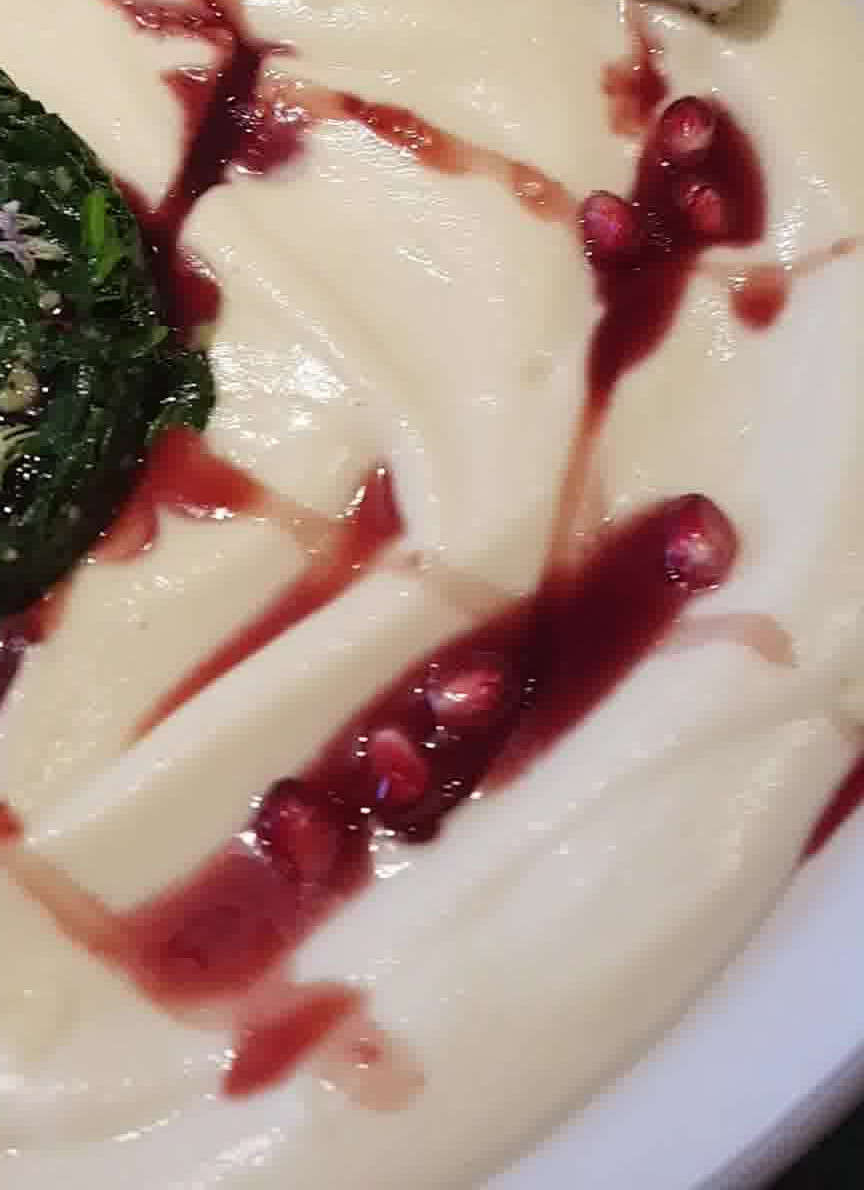
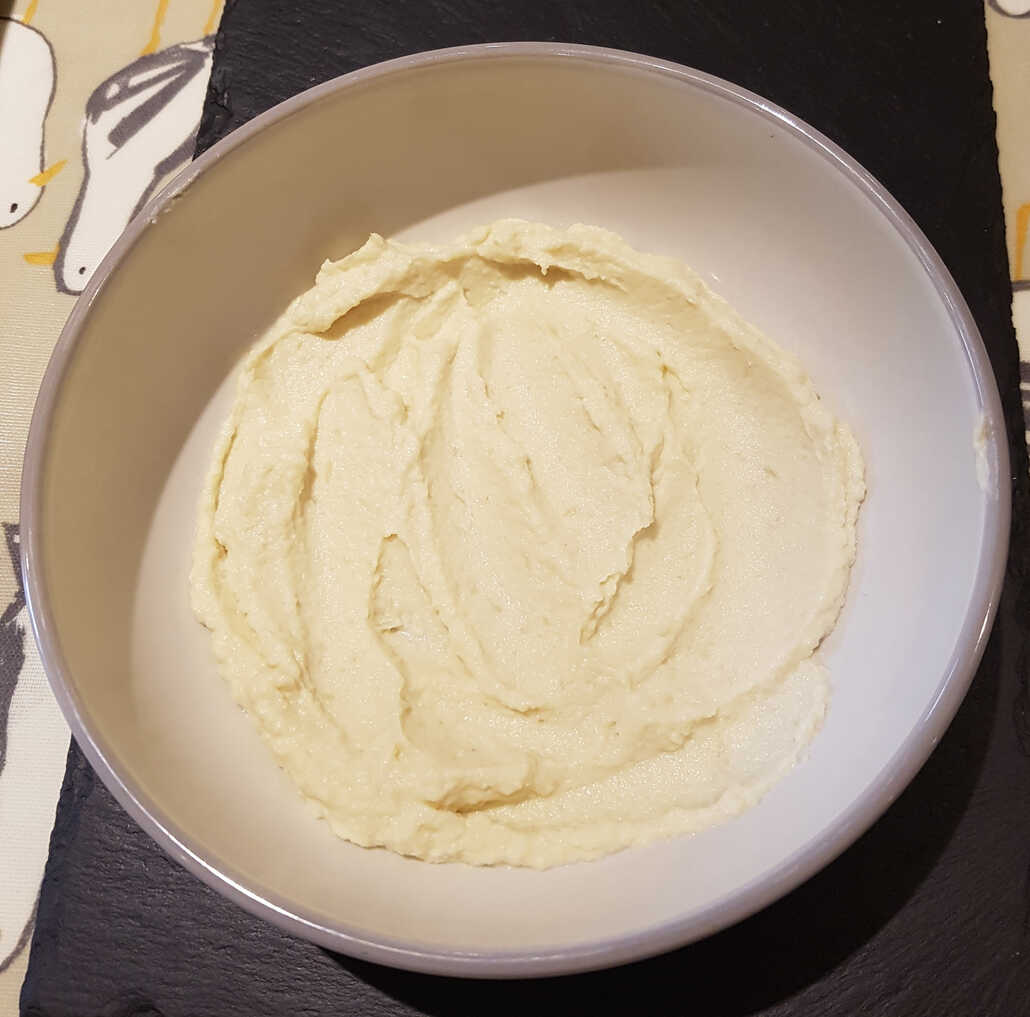
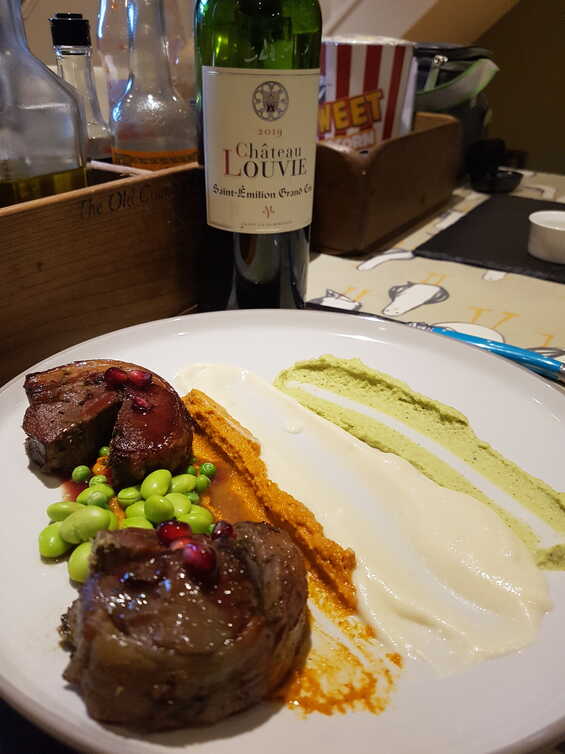
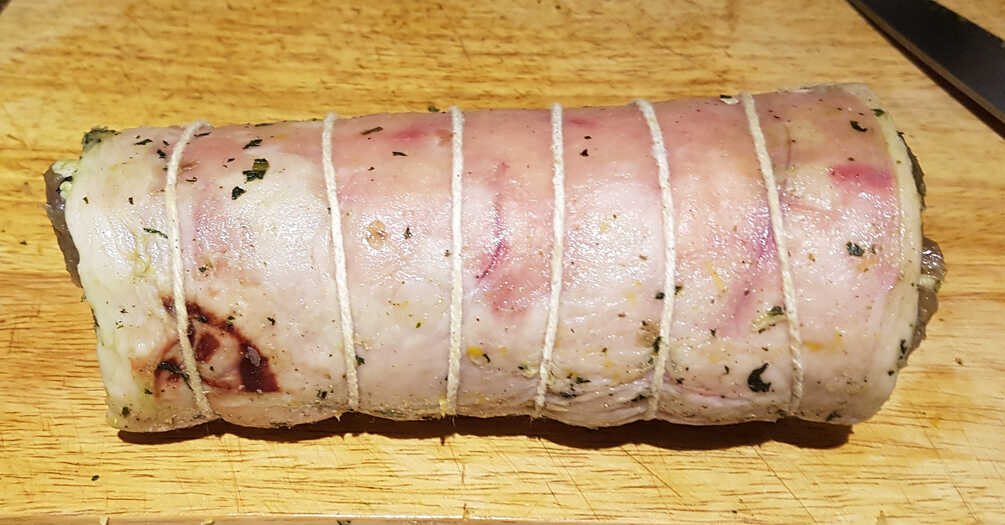
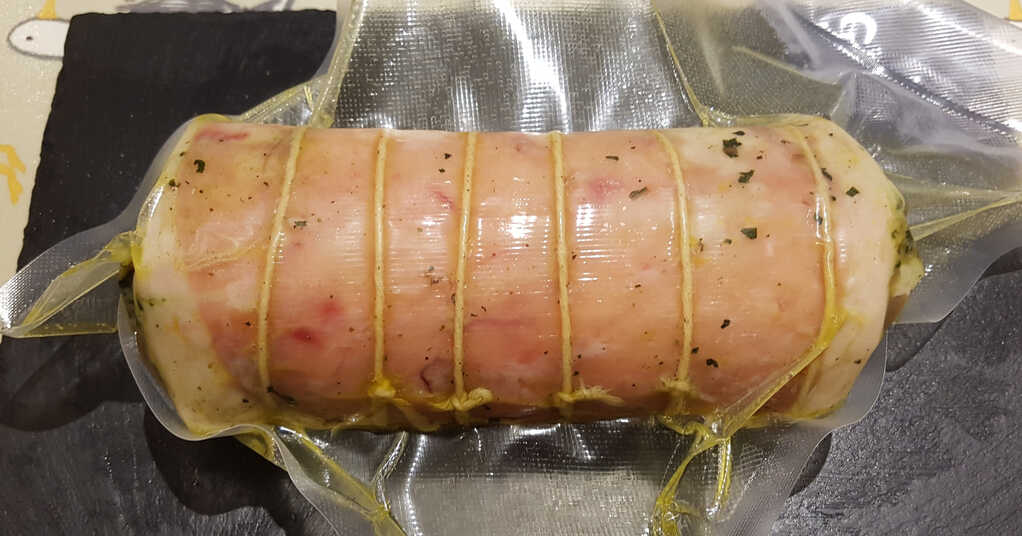
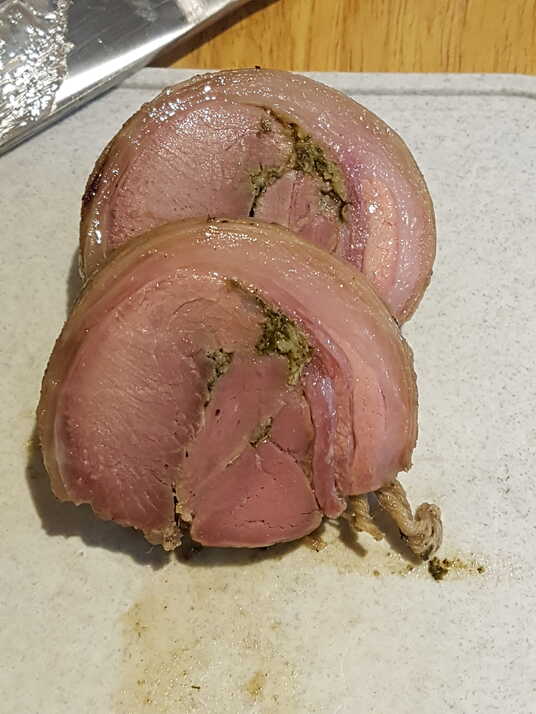
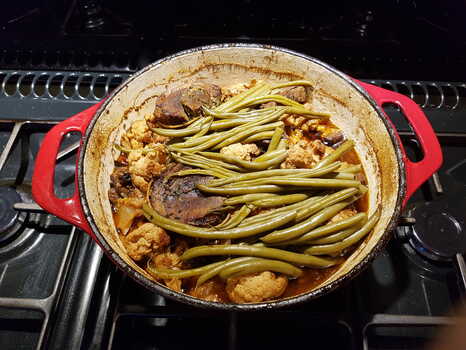
You could either freeze a cube of the oil first or freeze chill the whole bag before sealing to prevent that from happening.